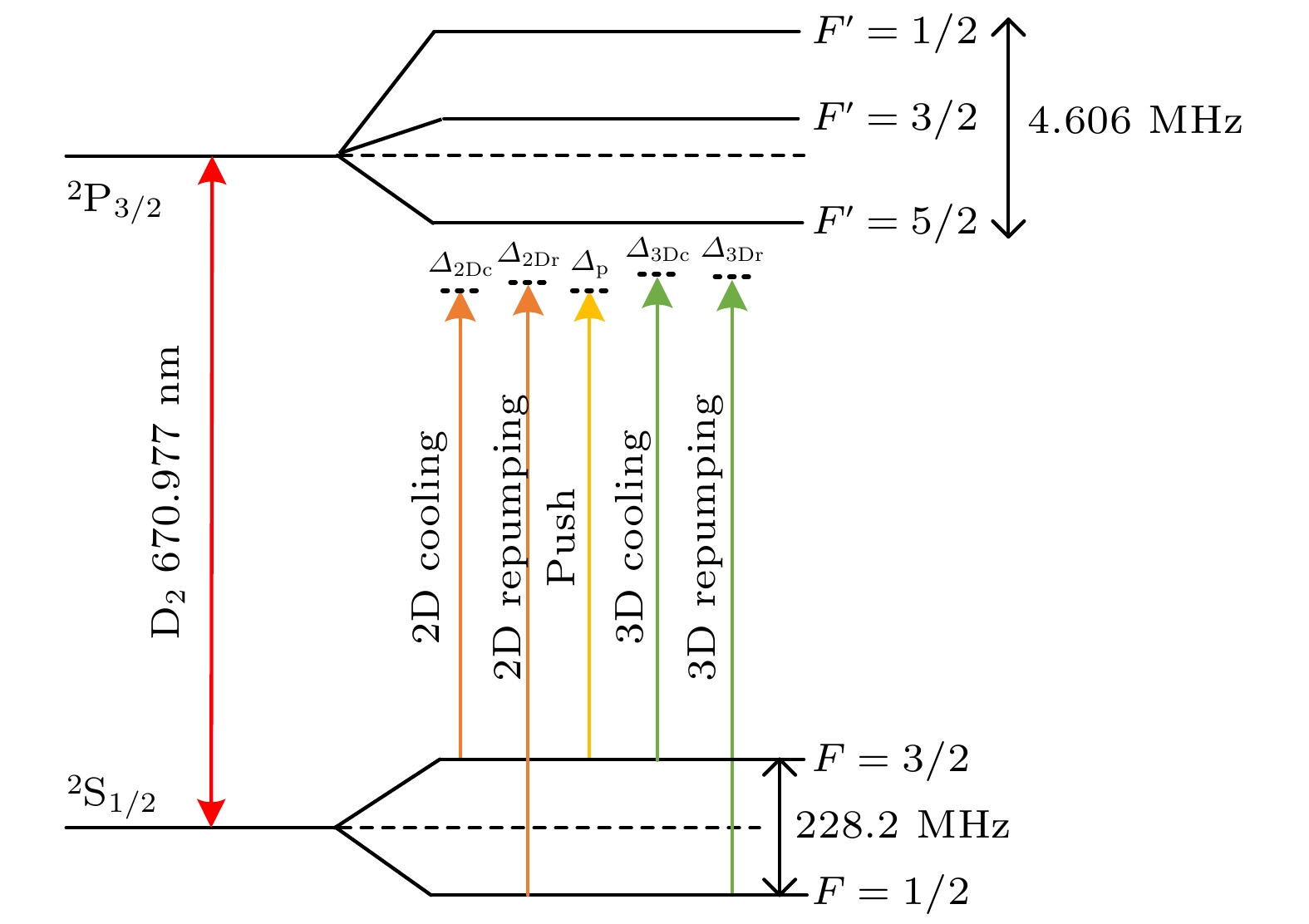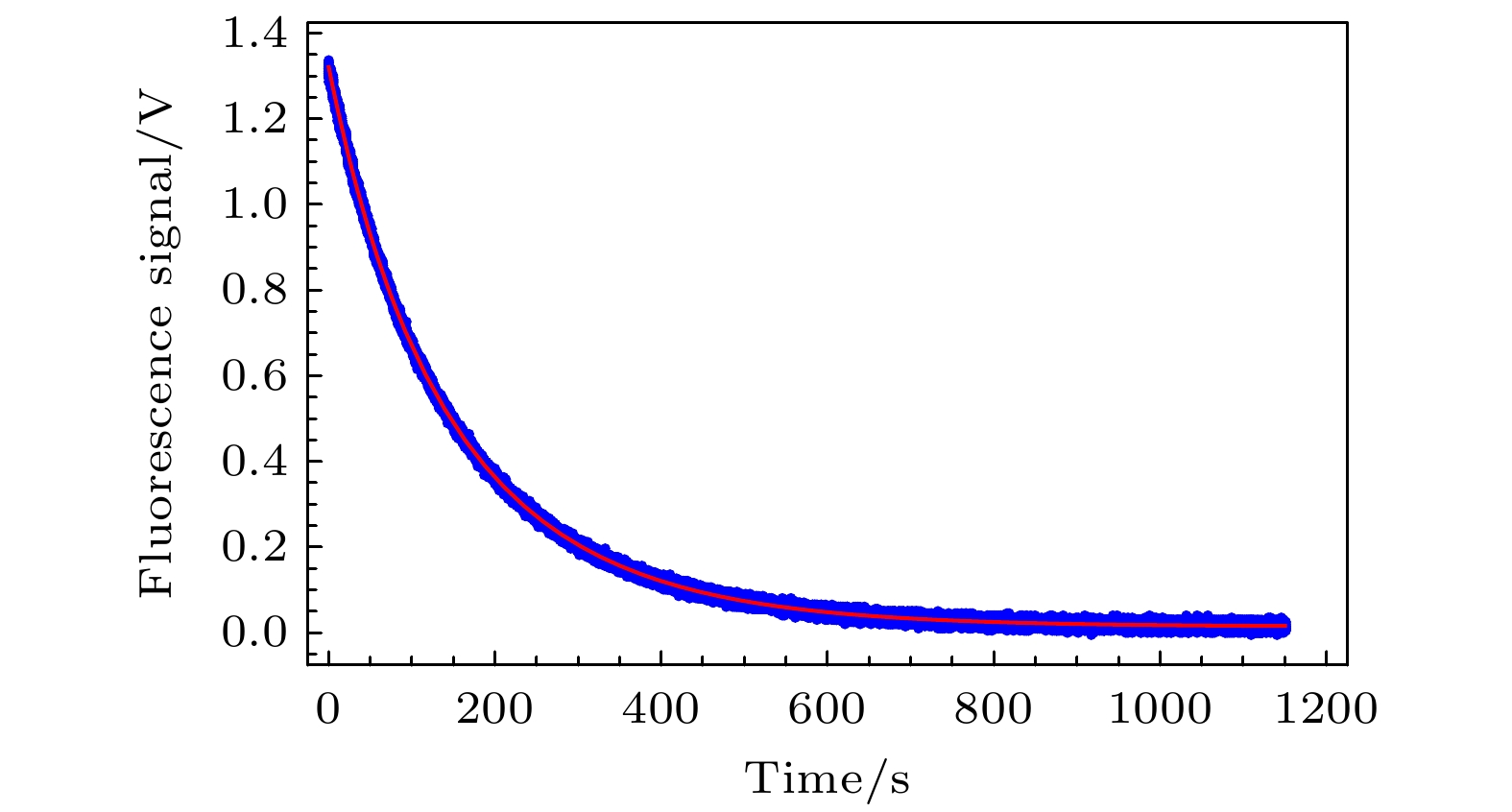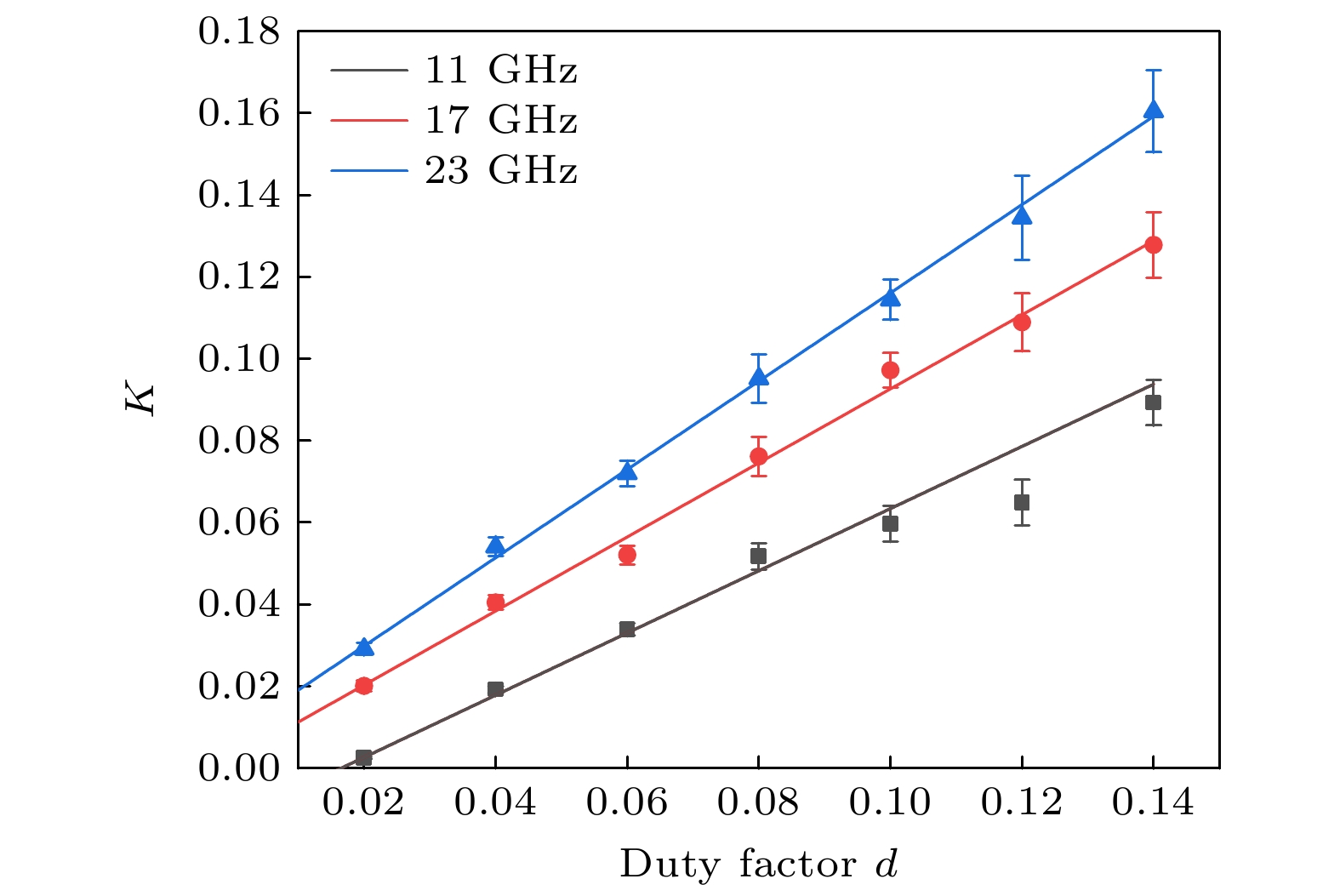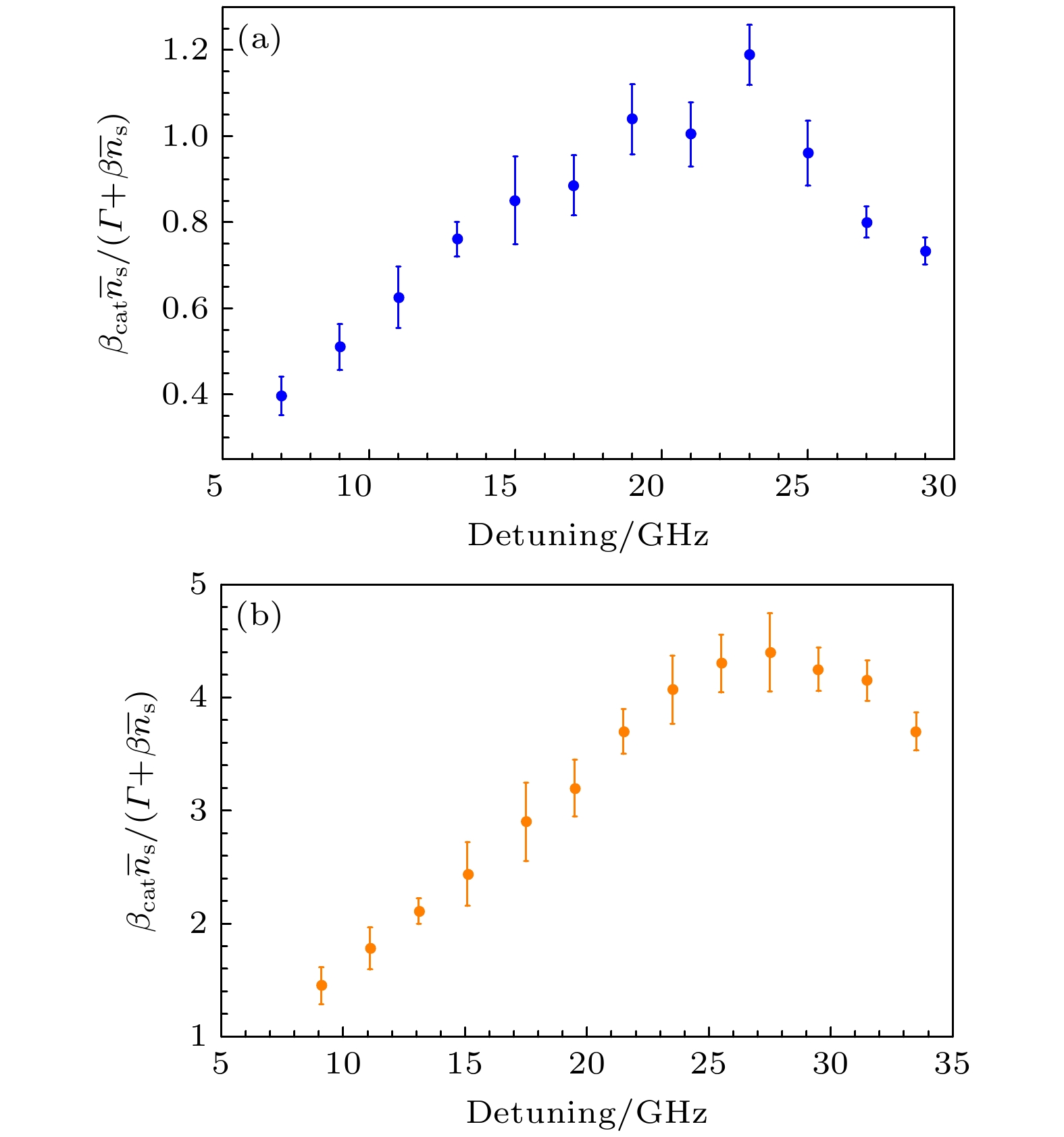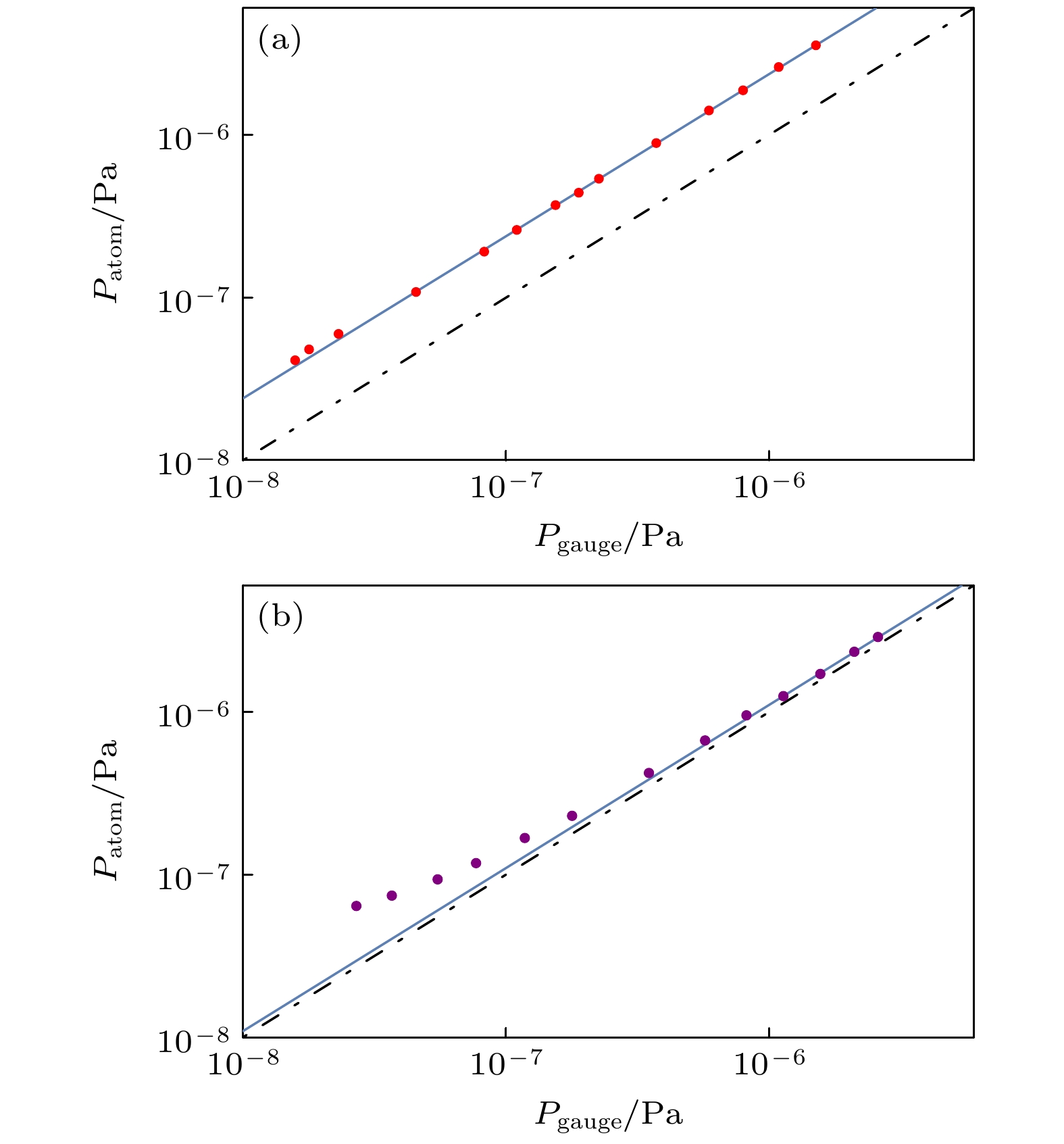-
Ultra-high vacuum measurement and extremely high vacuum (UHV/XHV) measurement play an important role in high-tech fields such as deep space exploration, particle accelerators, and nanoscience; with the continuous extension of the lower limit of measurement, especially when it reaches the order of 10–10 Pa, higher requirements are placed on the accuracy of the measurement. At present, in the field of UHV/XHV measurement, ionization gauges based on the principle of neutral gas ionization are commonly applied to the vacuum measurement. However, traditional ionization vacuum gauges during use can create electronic excitation desorption effects, soft X-rays, and the effect of hot cathode outgassing, thereby affecting the accuracy of measurement and limiting the lower limit of measurement. Compared with the traditional measurement technology, this method uses the relationship between the loss rate and pressure caused by the collision of cold atoms trapped in the trap depth with the background gas to calculate the gas density and inversely calculate the vacuum pressure. Based on the intrinsic quantum mechanical properties of cold atom collisions, this method is expected to be developed into a new vacuum traceability standard. In this paper, based on the small-angle approximation and impulse approximation under the quantum scattering theory, the loss rate coefficient of the collision of 6Li cold atoms with background gas molecules is calculated. According to the ideal gas equation, the pressure inversion formula is obtained. The collision loss rate is extracted by accurately fitting the loss curve of the cold atom. In order to improve the accuracy of vacuum inversion and reduce the influence of quantum diffractive collision on loss rate measurement, the trap depth under the conditions of a certain cooling laser intensity, detuning, and magnetic field gradient is determined by the photoassociation method. Finally, in a range of 1 × 10–8–5 × 10–6 Pa, the inverted pressure value is compared with the measured value of the ionization meter, proving that this method has good accuracy and reliability in the inversion of vacuum pressure. At present, the main factor restricting the improvement of accuracy is the influence of the collision between the excited atoms in the magneto-optical trap and the background gas on the loss rate measurement. In the future, with the proportion of excited atoms and the excited state C6 coefficient to be precisely determined, the uncertainty of vacuum pressure measurement can be further reduced.
-
Keywords:
- vacuum pressure measurement /
- cold atoms /
- loss rate coefficient /
- trap depth
[1] Gibney E 2017 Nature 551 18
 Google Scholar
Google Scholar
[2] 范栋, 习振华, 贾文杰, 成永军, 李得天 2021 物理学报 70 040602
 Google Scholar
Google Scholar
Fan D, Xi Z H, Jia W J, Cheng Y J, Li D T 2021 Acta Phys. Sin. 70 040602
 Google Scholar
Google Scholar
[3] Scherschligt J, Fedchak J A, Ahmed Z, Barker D S, Douglass K, Eckel S, Hanson E, Hendricks J, Klimov N, Purdy T, Ricker J, Singh R, Stone J 2018 J. Vac. Sci. Technol., A 36 040801
 Google Scholar
Google Scholar
[4] Calcatelli A 2013 Measurement 46 1029
 Google Scholar
Google Scholar
[5] 李得天, 成永军, 习振华 2018 宇航计测技术 38 1
 Google Scholar
Google Scholar
Li D T, Cheng Y J, Xi Z H 2018 J. Astronaut. Metrol. Meas. 38 1
 Google Scholar
Google Scholar
[6] Raab E L, Prentiss M, Cable A, Chu S, Pritchard D E 1987 Phys. Rev. Lett. 59 2631
 Google Scholar
Google Scholar
[7] Prentiss M, Cable A, Bjorkholm J E, Chu S, Raab E L 1988 Opt. Lett. 13 452
 Google Scholar
Google Scholar
[8] Bjorkholm J E 1988 Phys. Rev. A 38 1599
 Google Scholar
Google Scholar
[9] Arpornthip T, Sackett C A, Hughes K J 2012 Phys. Rev. A 85 033420
 Google Scholar
Google Scholar
[10] Yuan J P, Ji Z H, Zhao Y T, Chang X F, Xiao L T, Jia S T 2013 Appl. Opt. 52 6195
 Google Scholar
Google Scholar
[11] Xiang J F, Cheng H N, Peng X K, Wang X W, Ren W, Ji J W, Liu K K, Zhao J B, Li L, Qu Q Z, Li T, Wang B, Ye M F, Zhao X, Yao Y Y, Lü D S, Liu L 2018 Chin. Phys. B 27 073701
 Google Scholar
Google Scholar
[12] Scherschligt J, Fedchak J A, Barker D S, Eckel S, Klimov N, Makrides C, Tiesinga E 2017 Metrologia 54 125
 Google Scholar
Google Scholar
[13] Eckel S, Barker D S, Fedchak J A, Klimov N N, Norrgard E, Scherschligt J, Makrides C, Tiesinga E 2018 Metrologia 55 182
 Google Scholar
Google Scholar
[14] Barker D S, Klimov N N, Tiesinga E, Fedchak J A, Scherschligt J, Eckel S 2021 Measurement: Sensors 18 100229
[15] Makhalov V B, Martiyanov K A, Turlapov A V 2016 Metrologia 53 1287
 Google Scholar
Google Scholar
[16] Makhalov V B, Turlapov A V 2017 Quantum Electron. 47 431
 Google Scholar
Google Scholar
[17] Booth J L, Shen P R, Krems R V, Madison K W 2019 New J. Phys. 21 102001
 Google Scholar
Google Scholar
[18] Shen P R, Madison K W, Booth J L 2020 Metrologia 57 025015
 Google Scholar
Google Scholar
[19] Shen P R, Madison K W, Booth J L 2021 Metrologia 58 022101
 Google Scholar
Google Scholar
[20] Makrides C, Barker D S, Fedchak J A, Scherschligt J, Eckel S, Tiesinga E 2019 Phys. Rev. A 99 042704
 Google Scholar
Google Scholar
[21] Bali S, O’Hara K M, Gehm M E, Granade S R, Thomas J E 1999 Phys. Rev. A 60 R29
 Google Scholar
Google Scholar
[22] Zhu C, Dalgarno A, Derevianko 2002 Phys. Rev. A 65 034708
 Google Scholar
Google Scholar
[23] 武跃龙, 李睿, 芮扬, 姜海峰, 武海斌 2018 物理学报 67 163201
 Google Scholar
Google Scholar
Wu Y L, Li R, Rui Y, Jiang H F, Wu H B 2018 Acta Phys. Sin. 67 163201
 Google Scholar
Google Scholar
[24] Tiecke T G, Gensemer S D, Ludewig A, Walraven J T M 2009 Phys. Rev. A 80 013409
 Google Scholar
Google Scholar
[25] Hoffmann D, Bali S, Walker T 1996 Phys. Rev. A 54 1030
 Google Scholar
Google Scholar
[26] Dongen J V, Zhu C, Clement D, Dufour G, Booth J L, Madison K W 2011 Phys. Rev. A 84 022708
 Google Scholar
Google Scholar
[27] Hong S S, Shin Y H, Kim J T 2008 Measurement 41 1026
 Google Scholar
Google Scholar
[28] 李得天 2003 真空与低温 9 85
 Google Scholar
Google Scholar
Li D T 2003 Vac. Cryogenics 9 85
 Google Scholar
Google Scholar
-
图 5 与催化激光诱导的损失率成正比的
${{\beta _{{\text{cat}}}}{{\bar n}_{\text{s}}}} / $ $ {({{{\varGamma}}_1} + \beta {{\bar n}_{\text{s}}})}$ 随催化激光失谐量Δ的变化 (a) 对应磁光阱冷却光失谐量Δ3Dc = –12 MHz, 总光功率7.36 mW/cm2; (b) 对应磁光阱冷却光失谐量Δ3Dc = –12 MHz, 总光功率20.9 mW/cm2Figure 5. Quantity
$ {{{\beta _{{\text{cat}}}}{{\bar n}_{\text{s}}}} / {({{{\varGamma}}_1} + \beta {{\bar n}_{\text{s}}})}} $ , proportional to the photoassociation induced loss rate, measured as a function of the catalysis laser detuning, Δ. The data of (a) correspond to a MOT with a cooling laser detuning of Δ3Dc = –12 MHz and a total pump laser intensity of 7.36 mW/cm2. The data of (b) correspond to a MOT with a cooling laser detuning of Δ3Dc = –12 MHz and a total pump laser intensity of 20.9 mW/cm2. -
[1] Gibney E 2017 Nature 551 18
 Google Scholar
Google Scholar
[2] 范栋, 习振华, 贾文杰, 成永军, 李得天 2021 物理学报 70 040602
 Google Scholar
Google Scholar
Fan D, Xi Z H, Jia W J, Cheng Y J, Li D T 2021 Acta Phys. Sin. 70 040602
 Google Scholar
Google Scholar
[3] Scherschligt J, Fedchak J A, Ahmed Z, Barker D S, Douglass K, Eckel S, Hanson E, Hendricks J, Klimov N, Purdy T, Ricker J, Singh R, Stone J 2018 J. Vac. Sci. Technol., A 36 040801
 Google Scholar
Google Scholar
[4] Calcatelli A 2013 Measurement 46 1029
 Google Scholar
Google Scholar
[5] 李得天, 成永军, 习振华 2018 宇航计测技术 38 1
 Google Scholar
Google Scholar
Li D T, Cheng Y J, Xi Z H 2018 J. Astronaut. Metrol. Meas. 38 1
 Google Scholar
Google Scholar
[6] Raab E L, Prentiss M, Cable A, Chu S, Pritchard D E 1987 Phys. Rev. Lett. 59 2631
 Google Scholar
Google Scholar
[7] Prentiss M, Cable A, Bjorkholm J E, Chu S, Raab E L 1988 Opt. Lett. 13 452
 Google Scholar
Google Scholar
[8] Bjorkholm J E 1988 Phys. Rev. A 38 1599
 Google Scholar
Google Scholar
[9] Arpornthip T, Sackett C A, Hughes K J 2012 Phys. Rev. A 85 033420
 Google Scholar
Google Scholar
[10] Yuan J P, Ji Z H, Zhao Y T, Chang X F, Xiao L T, Jia S T 2013 Appl. Opt. 52 6195
 Google Scholar
Google Scholar
[11] Xiang J F, Cheng H N, Peng X K, Wang X W, Ren W, Ji J W, Liu K K, Zhao J B, Li L, Qu Q Z, Li T, Wang B, Ye M F, Zhao X, Yao Y Y, Lü D S, Liu L 2018 Chin. Phys. B 27 073701
 Google Scholar
Google Scholar
[12] Scherschligt J, Fedchak J A, Barker D S, Eckel S, Klimov N, Makrides C, Tiesinga E 2017 Metrologia 54 125
 Google Scholar
Google Scholar
[13] Eckel S, Barker D S, Fedchak J A, Klimov N N, Norrgard E, Scherschligt J, Makrides C, Tiesinga E 2018 Metrologia 55 182
 Google Scholar
Google Scholar
[14] Barker D S, Klimov N N, Tiesinga E, Fedchak J A, Scherschligt J, Eckel S 2021 Measurement: Sensors 18 100229
[15] Makhalov V B, Martiyanov K A, Turlapov A V 2016 Metrologia 53 1287
 Google Scholar
Google Scholar
[16] Makhalov V B, Turlapov A V 2017 Quantum Electron. 47 431
 Google Scholar
Google Scholar
[17] Booth J L, Shen P R, Krems R V, Madison K W 2019 New J. Phys. 21 102001
 Google Scholar
Google Scholar
[18] Shen P R, Madison K W, Booth J L 2020 Metrologia 57 025015
 Google Scholar
Google Scholar
[19] Shen P R, Madison K W, Booth J L 2021 Metrologia 58 022101
 Google Scholar
Google Scholar
[20] Makrides C, Barker D S, Fedchak J A, Scherschligt J, Eckel S, Tiesinga E 2019 Phys. Rev. A 99 042704
 Google Scholar
Google Scholar
[21] Bali S, O’Hara K M, Gehm M E, Granade S R, Thomas J E 1999 Phys. Rev. A 60 R29
 Google Scholar
Google Scholar
[22] Zhu C, Dalgarno A, Derevianko 2002 Phys. Rev. A 65 034708
 Google Scholar
Google Scholar
[23] 武跃龙, 李睿, 芮扬, 姜海峰, 武海斌 2018 物理学报 67 163201
 Google Scholar
Google Scholar
Wu Y L, Li R, Rui Y, Jiang H F, Wu H B 2018 Acta Phys. Sin. 67 163201
 Google Scholar
Google Scholar
[24] Tiecke T G, Gensemer S D, Ludewig A, Walraven J T M 2009 Phys. Rev. A 80 013409
 Google Scholar
Google Scholar
[25] Hoffmann D, Bali S, Walker T 1996 Phys. Rev. A 54 1030
 Google Scholar
Google Scholar
[26] Dongen J V, Zhu C, Clement D, Dufour G, Booth J L, Madison K W 2011 Phys. Rev. A 84 022708
 Google Scholar
Google Scholar
[27] Hong S S, Shin Y H, Kim J T 2008 Measurement 41 1026
 Google Scholar
Google Scholar
[28] 李得天 2003 真空与低温 9 85
 Google Scholar
Google Scholar
Li D T 2003 Vac. Cryogenics 9 85
 Google Scholar
Google Scholar
Catalog
Metrics
- Abstract views: 3455
- PDF Downloads: 136
- Cited By: 0














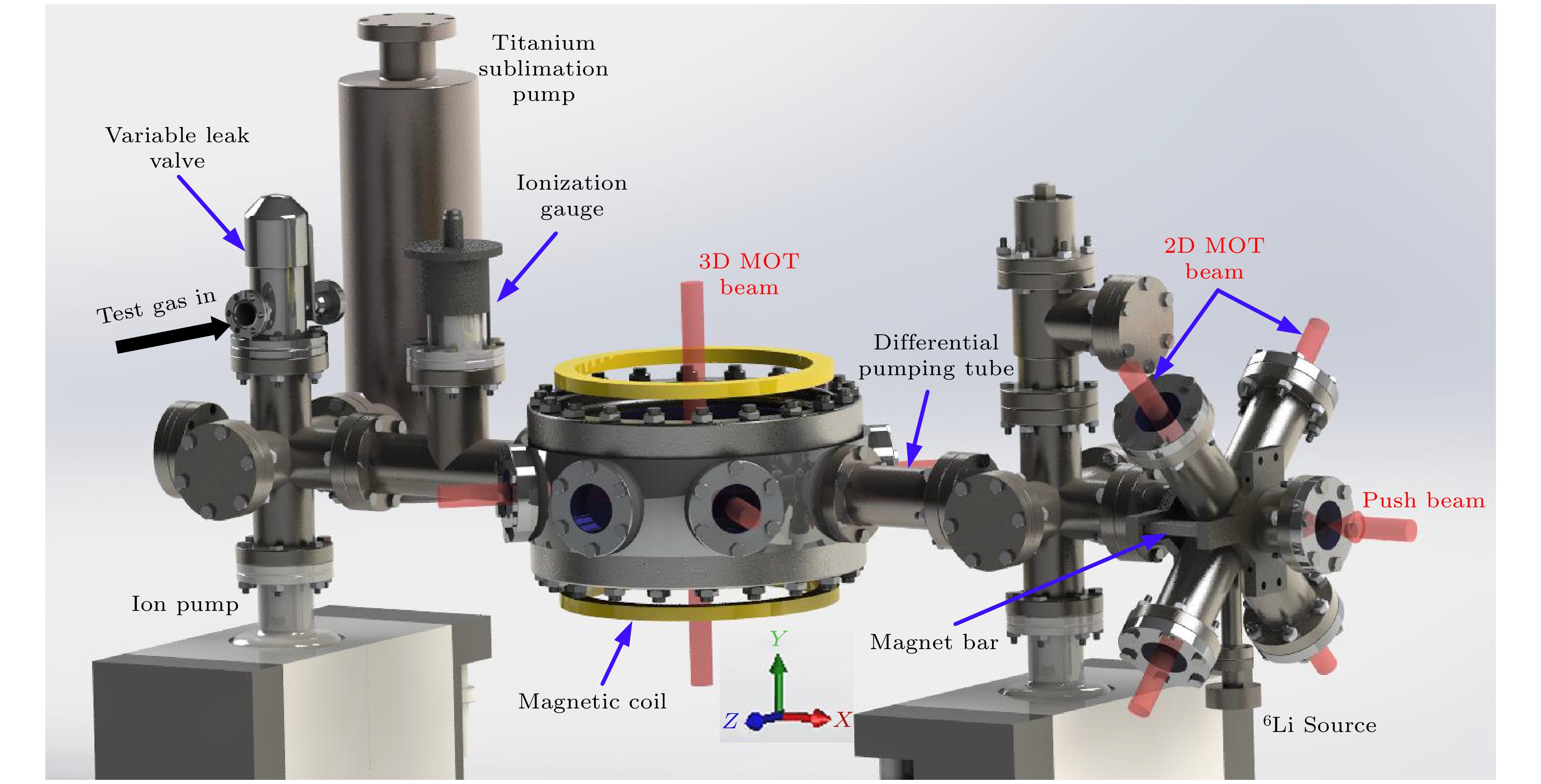
 DownLoad:
DownLoad:
